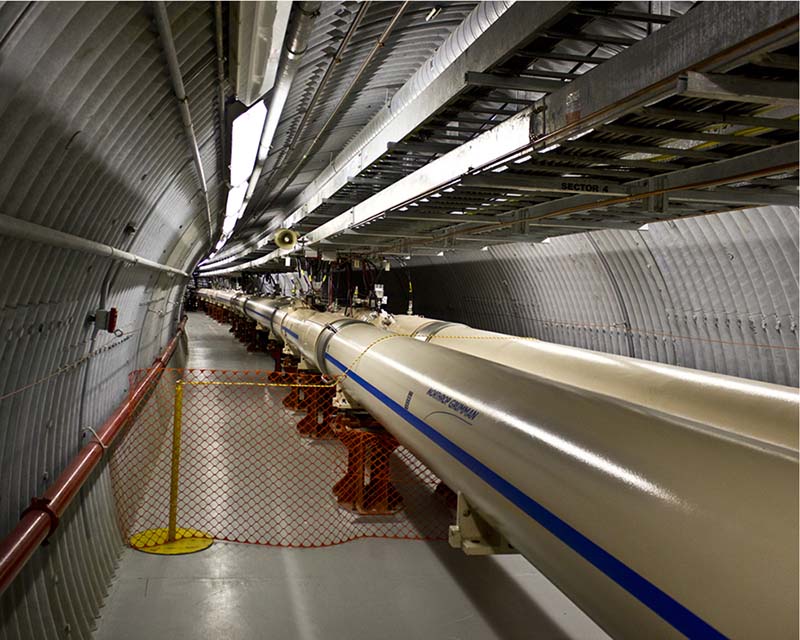
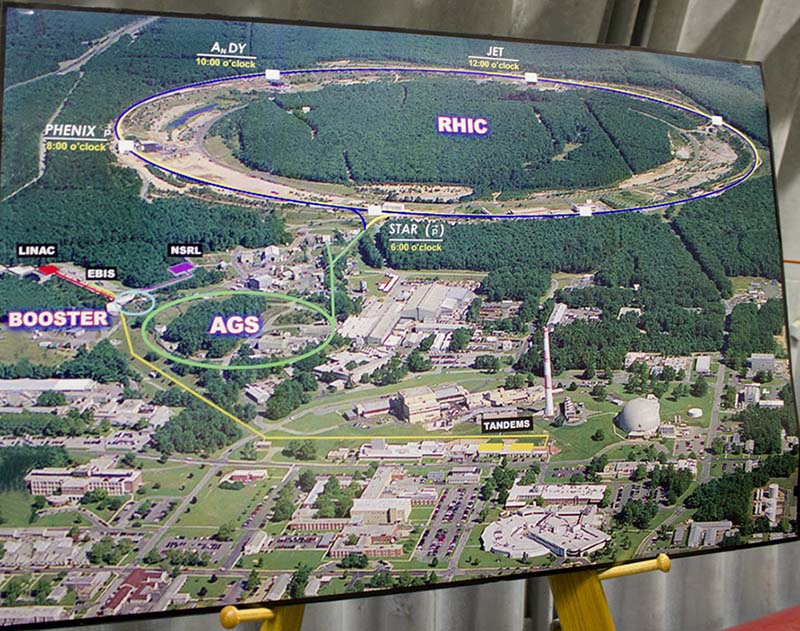




The Relativistic Heavy Ion Collider (RHIC or Rick) is the first and one of only two operating heavy-ion colliders, and the only spin-polarized proton collider ever built. Located at Brookhaven National Laboratory (BNL) in Upton, New York, and used by an international team of researchers, it is the only operating particle collider in the US.
RHIC began operation in 2000 and until November 2010 was the highest-energy heavy-ion collider in the world. The Large Hadron Collider (LHC) of CERN, while used mainly for colliding protons, operates with heavy ions for about one month per year. The LHC has operated with 25 times higher energies per nucleon.
In 2010, RHIC physicists published results of temperature measurements from earlier experiments which concluded that temperatures in excess of 345 MeV (4 terakelvin or 7 trillion degrees Fahrenheit) had been achieved in gold ion collisions, and that these collision temperatures resulted in the breakdown of "normal matter" and the creation of a liquid-like quark–gluon plasma.
As of 2018, RHIC and the LHC are the only operating hadron colliders in the world. Due to the longer operating time per year, a greater number of colliding ion species and collision energies can be studied at RHIC.
In addition and unlike the LHC, RHIC is also able to accelerate spin polarized protons, which would leave RHIC as the world's highest energy accelerator for studying spin-polarized proton structure.
A major upgrade is the Electron–Ion Collider (EIC), the addition of a 18 GeV high intensity electron beam facility, allowing electron-ion collisions. At least one new detector will have to be built to study the collisions. A review was published by Abhay Deshpande et al. in 2005.
As of 2019 RHIC is the second-highest-energy heavy-ion collider in the world - after the Large Hadron Collider (LHC) - with nucleon energies for collisions reaching 100 GeV for gold ions and 250 GeV for protons.
On January 9, 2020, It was announced by Paul Dabbar, undersecretary of the US Department of Energy Office of Science, that the BNL eRHIC design has been selected for the future electron–ion collider (EIC) in the United States. In addition to the site selection, it was announced that the BNL EIC had acquired CD-0 (mission need) from the Department of Energy. Read more ...
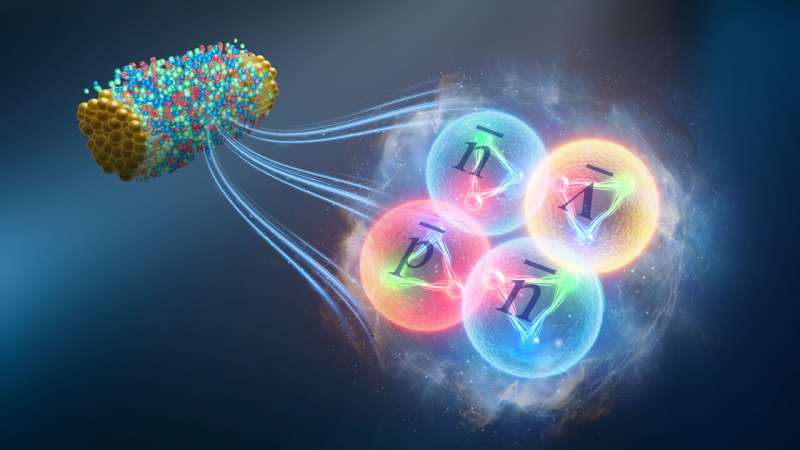
Super strong magnetic fields leave imprint on nuclear matter PhysOrg - February 24, 2024
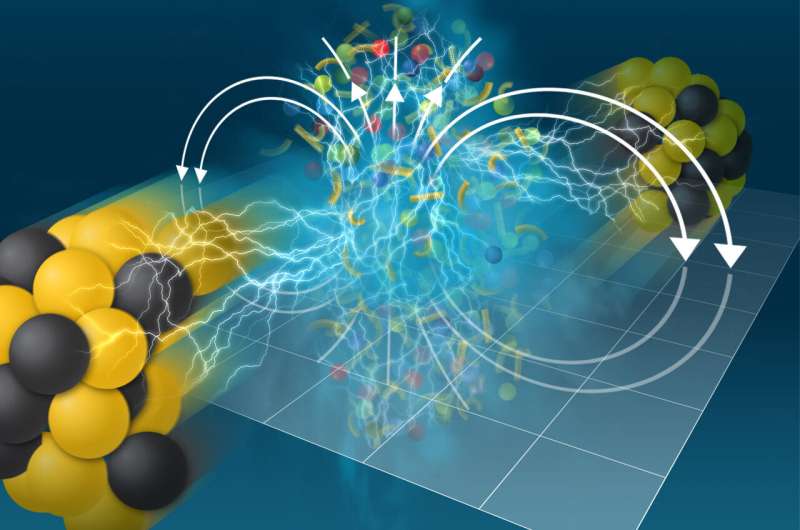
The data indicate that powerful magnetic fields generated in off-center collisions induce an electric current in the quarks and gluons set free, or deconfined, from protons and neutrons by the particle smashups. The findings give scientists a new way to study the electrical conductivity of this "quark-gluon plasma" (QGP) to learn more about these fundamental building blocks of atomic nuclei.
RHIC particle smashups find that shape matters PhysOrg - December 7, 2015
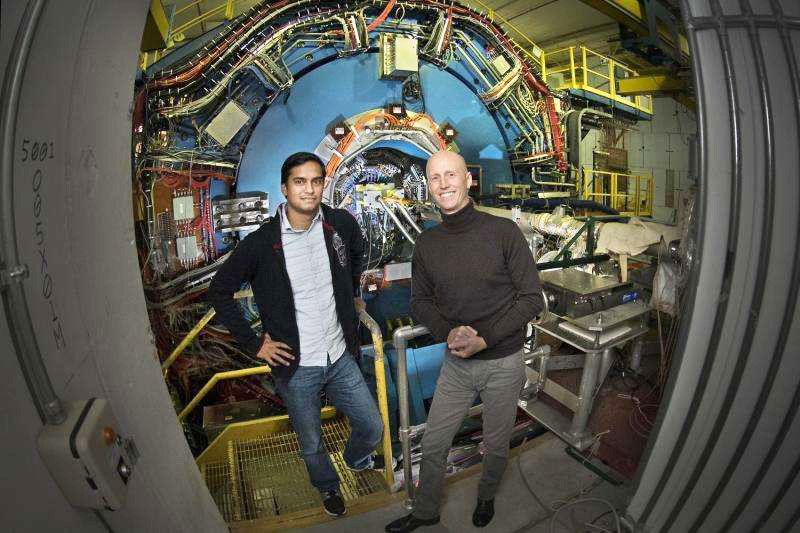
Peering into the seething soup of primordial matter created in particle collisions at the Relativistic Heavy Ion Collider (RHIC)-an "atom smasher" dedicated to nuclear physics research at the U.S. Department of Energy's Brookhaven National Laboratory-scientists have come to a new understanding of how particles are produced in these collisions. This understanding represents a paradigm shift consistent with the presence of a saturated state of gluons, super-dense fields of the glue-like particles that bind the building blocks of ordinary matter.
Scientists see ripples of a particle-separating wave in primordial plasma PhysOrg - June 8, 2015
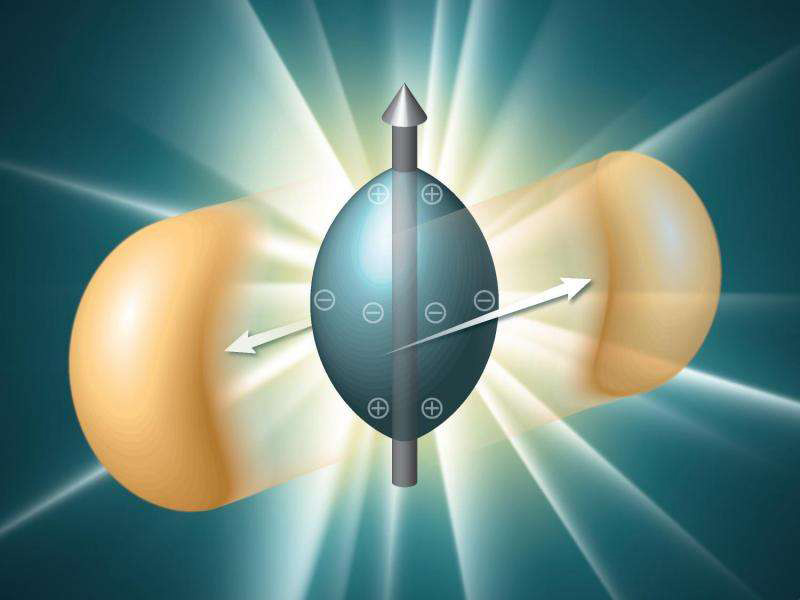
Scientists in the STAR collaboration at the Relativistic Heavy Ion Collider (RHIC), a particle accelerator exploring nuclear physics and the building blocks of matter at the U.S. Department of Energy's Brookhaven National Laboratory, have new evidence for what's called a "chiral magnetic wave" rippling through the soup of quark-gluon plasma created in RHIC's energetic particle smashups.
Relativistic Heavy Ion Collider smashes record for polarized proton luminosity PhysOrg - April 14, 2015
The Relativistic Heavy Ion Collider (RHIC), a powerful particle accelerator for nuclear physics research at the U.S. Department of Energy's Brookhaven National Laboratory, just shattered its own record for producing polarized proton collisions at 200-giga-electron-volt (GeV) collision energy. In the experimental run currently underway at this two-ringed, 2.4-mile-circumference particle collider, accelerator physicists are now delivering 1200 billion of these subatomic smashups per week-more than double the number routinely achieved in 2012, the last run dedicated to polarized proton experiments at this collision energy.
Tracking the transition of early-universe quark soup to matter-as-we-know-it Science Daily - April 7, 2014
Ever wonder how the hot soup of subatomic particles that filled the early universe transformed into the ordinary matter of today's world? Nuclear physicists exploring this question can't exactly travel back 13.8 billion years to watch what really happened, but they can recreate matter at the extreme temperatures and densities that existed just after the Big Bang by smashing together ordinary atomic nuclei at the Relativistic Heavy Ion Collider (RHIC).
Tracking the transition of early-universe quark soup to matter as we know it PhysOrg - April 7, 2014
Ever wonder how the hot soup of subatomic particles that filled the early universe transformed into the ordinary matter of today's world? Nuclear physicists exploring this question can't exactly travel back 13.8 billion years to watch what really happened, but they can recreate matter at the extreme temperatures and densities that existed just after the Big Bang by smashing together ordinary atomic nuclei at the Relativistic Heavy Ion Collider (RHIC)
Big Bang Conditions Created in Lab Live Science - February 15, 2010
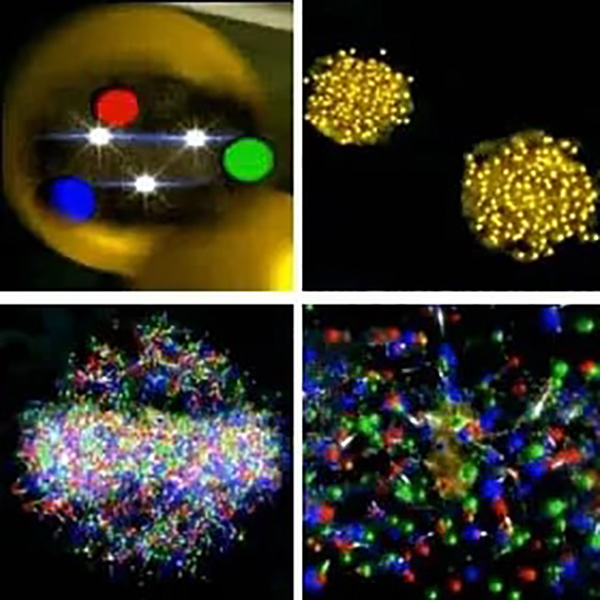
By smashing gold particles together at super-fast speeds, physicists have basically melted protons, creating a kind of "quark soup" of matter that is about 250,000 times hotter than the center of the sun and similar to conditions just after the birth of the universe.Scientists reported in 2005 that they suspected they had created this unique state of matter, but for the first time they have verified that the extreme temperatures necessary have been reached.